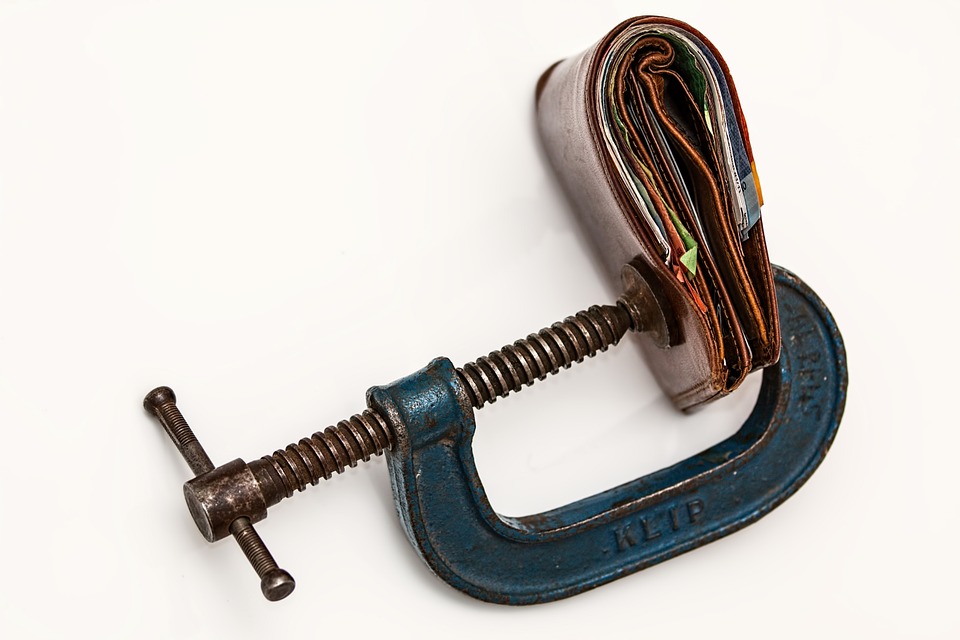Have excessive debt that’s weighing on your psyche and ability to enjoy the quality of lifestyle you seek? You’re surely not alone. In fact, around 80 percent of Americans carry debt ranging from mortgages and student loans to credit card balances, medical debt and auto loans.
Not all of this debt is bad debt; however, a significant percentage of consumers will struggle to pay back what they owe and feel doomed in the process.
If you’re nodding your head as if to say “yep, that’s me,” keep reading this list to learn why being in debt doesn’t mean you’re doomed, regardless of what the statistics might suggest!
Changing the “Debtor’s Viewpoint”
Owing quadruple-digit sums with only so much income coming in each month is intimidating. Add owing quadruple-digit amounts in debt like credit cards, which carry monthly interest rates as high as 25 percent, and the situation is downright panic-inducing.
Staring at what seems like an insurmountable sum while experiencing crippling negative emotions like fear, hopelessness, anger and sadness paralyzes us into grave acceptance. This is evidenced none other than by the 73 percent of Americans who die in debt with average balances of $61,554 (including mortgages) and $12,875 (excluding mortgages).
To combat this debilitating viewpoint, try to make progress any way you can. Seek therapy to unload the turmoil you’re experiencing, reach out to friends and family to uplift your spirits, set a budget to cut back in spending areas that only hurt your self-esteem and financial reflection.
Debt Relief Strategies for Every Situation
Seeking emotional support and maintaining a positive mindset are prerequisites to debt relief success, but an actual solution still needs to be developed for the debt to go away. The debt relief strategy to take should depend on the severity of the situation. This doesn’t necessarily mean the amount of debt owed, but more importantly, a debtor’s (in)ability to pay the debt back. Speaking to experts like those at Stoneroselaw.com will help you to find the best solution for your specific situation and needs.
If you realize that your debt is becoming a problem early on, you can spare yourself many consequences. By calling your creditor and explaining that you’re having difficulty making payments on your debt, they could grant you a short payment grace period, lower your interest rate or even restructure the terms of your debt. However, this DIY approach will only work if you haven’t already lapsed on your payments.
In the case that you have a regular income but your balance is so big that it only makes you feel overwhelmed, use proven repayment strategies like the debt avalanche, debt snowball, or the hybrid debt snowflake method.
When you follow a debt avalanche approach, you’ll pay the minimum balances on all your accounts except the one with the highest interest rate, which you’ll allocate all your remaining funds in your budget toward. Taking the debt snowball route focuses on paying all your minimums and contributing the remaining money after expenses to your lowest overall balance. The snowball approach aims to save on interest whereas the snowball builds morale for continued progress.
If your budget is barely breathing with either of these strategies, the debt snowflake plan focuses on contributing day-to-day “found” savings through either the avalanche or snowball method to accelerate the days till you’re debt-free.
For debtors who want a more hands-off approach, debt management services take one monthly payment and appropriately distribute it to creditors on the debtor’s behalf. There’s also debt consolidation that involves taking out a loan with a lower interest rate to pay back a debtor’s previous balances to simplify payment and save on interest.
For debt that’s well exceeding what a regular income and strategic planning can accomplish, some solutions can lead debtors to financial freedom. By working with a debt relief company or by declaring bankruptcy, you can take a big step toward getting back on track.
Companies like Freedom Debt Relief founded by financial thought leader and CEO Andrew Housser provide debt settlement services that attempt to resolve debts with a debtor’s creditor(s) for a lower lump-sum amount. These companies charge a fee based on the original amount of the settled debt, but a debtor is only charged if their debts are settled and they agree to pay the settled amount.
By hiring a bankruptcy attorney, paying court costs and signing up for financial management courses, you can have your debt forgiven by declaring bankruptcy. Declaring chapter 7 will result in some of your assets being liquidated to help pay back your debt. Declaring chapter 13 protects your assets but requires 3–5 years of court payments for debt to be wiped away.
All in all, even these more severe measures are better than living in debt and the torrid carousel of emotions that accompany it. Debt has a nasty reputation, but with the number of people encountering similar situations and the variety of solutions available for all debt stages and severities, the only way to doom yourself is to sit inactive while debt clouds your entire world.

